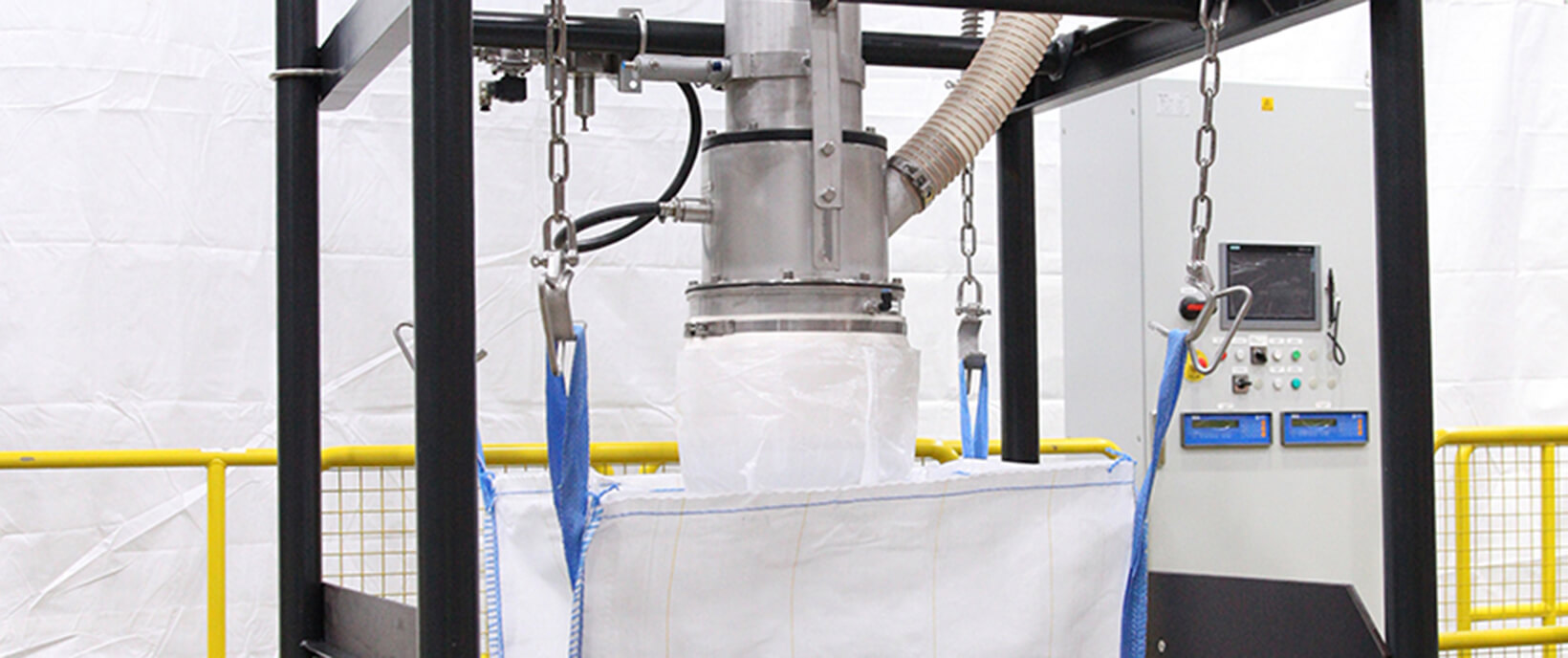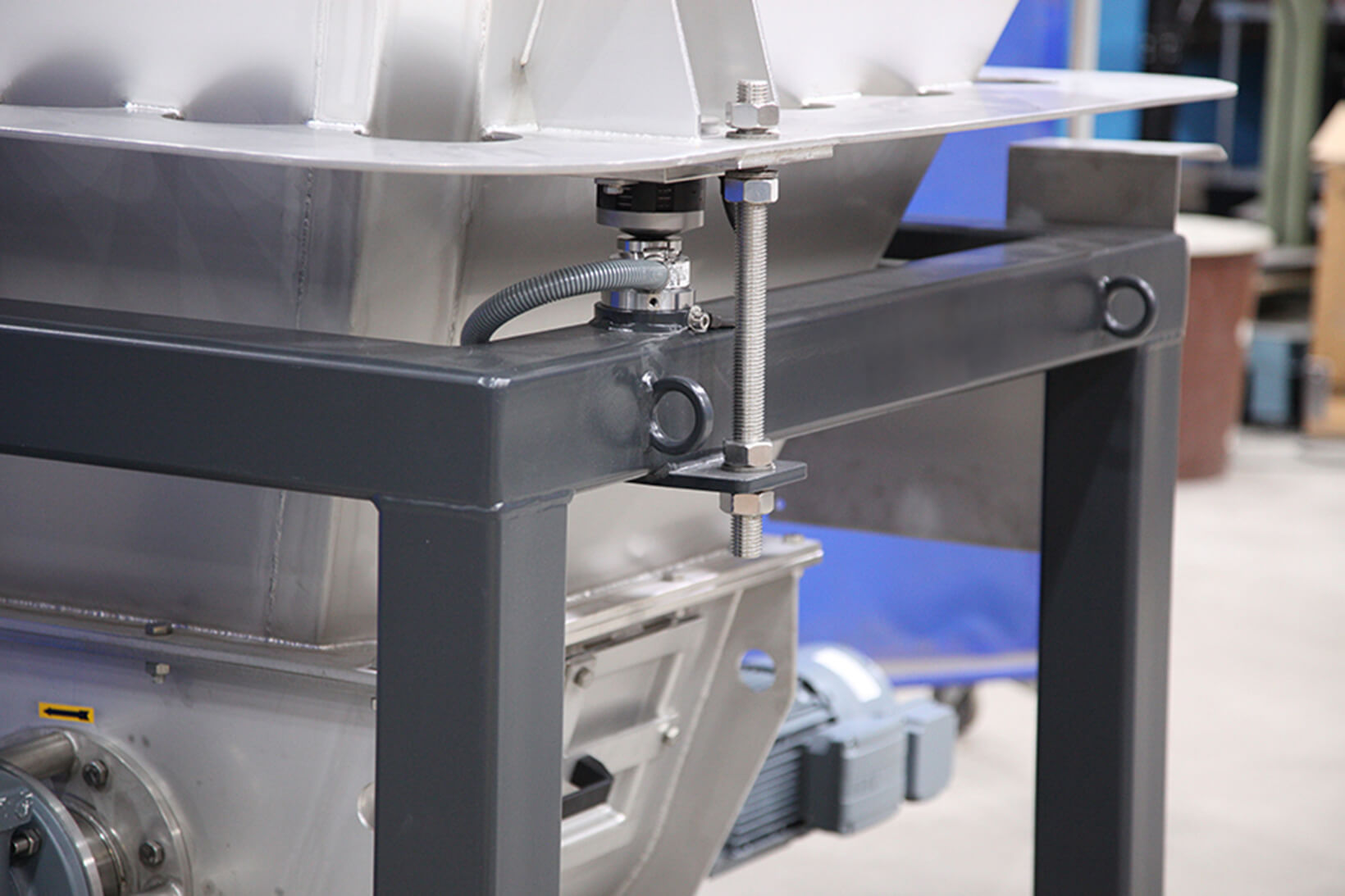A complete facility solution for the battery industry
Tamtron’s experience in bulk materials handling and solid expertise in weighing, dosing and transport technology (including ATEX) brings measurable added value to battery industry operators. The modular concept we have developed can be tailored to different applications, considering the industry’s individual needs.
Our versatile big bag solutions can also be perfectly adapted to the processes of the battery industry. By automating the handling of big bags, valuable materials such as lithium, cobalt and nickel can be utilised as efficiently as possible. Our modules can be used to build cathode material handling systems that operate highly process-independently, improving efficiency for every variable.
A highly automated bagging system helps to ensure safe and dust-free handling of lithium and transition metals.

Big bag handling equipment and dosing systems for the treatment of cathode materials
The battery industry needs big bag handling equipment and dosing systems for producing, handling, storing and transporting cathode materials and precursors used to manufacture lithium-ion batteries in a smooth, efficient and safe way.
Due to mines ‘ and refineries ‘ geographical location and operational capacity, many raw materials are delivered in containers, drums, barrels, or big bags. Big bags are the most cost-effective and by far the most common.
Big bags are often unloaded either directly into a weighing mixing tank or into an intermediate tank from which the material can be dosed by reduced weighing directly into the mixing tank or elsewhere. Accumulated materials can be unloaded and transferred to another location, for example, by pneumatic transfer. In addition, different methods of dosing, such as continuous or batch-type dosing, can be used depending on the needs of the process.
After transport, the reception of the packaged material ensures that the receiving container or bag is sufficiently emptied to minimize the material residue. The material may also need to be pre-processed back to a more workable form, for example, due to caking. In the case of big bags, part of the pre-treatment can be carried out during the unloading of the material by compactors or compactor breakers.
From the unloading point, the material is either transferred to an intermediate storage area or fed directly into the process, which significantly impacts the transfer method used. For energy efficiency reasons, it is recommended to use gravity as much as possible for dosing.
Tamtron solutions for the battery industry process area
(Same control system and its interfaces to DCS and ERP systems)
Bag unloading station
- Bag massager/preprocessor
- Dust-tight unloading station
- Bale wrenches
- Dosing or transferring equipment
- Possible mixer under dosing
- Optional bag identification and feed blocking (barcode reader)
Dispensers for the process
- Continuous or batching
- Just the suitable dosing device for each material and dosing need
- Dosing capacity from grams to tonnes
- Accuracy optimized for the application
Bagging stations
- Dust-tight filling head
- Bag filling for non-bulk or bulk filling
- Possibility of commercial weighing
Safe working environment with the most possible dust-free systems
The minerals and their compounds used in the manufacture of batteries are generally harmful and, due to the small particle size of the material, can be lethal if inhaled. Material handling to meet occupational health and safety requirements must be as dust-free as possible using appropriate ventilation. When designing the equipment, it is essential to consider how and at what level the containment and ventilation of the equipment itself will be achieved. For more hazardous materials, material flow isolation components such as special valves should be used, or the processing environment should be completely isolated, for example, by airtight enclosures.
Environmental containment is often done locally, and handling is done through gloves. More extensive isolation can also be carried out, but this often requires much more automation.

The components and materials of the equipment comply with the requirements of the ATEX Directive
The powdery materials to be handled present a risk of dusting, so the risk assessment indicates that the equipment may fall within a potentially explosive atmosphere under the ATEX Directive. The substances dealt with in the battery industry are often corrosive or oxidising, so they may also harm the materials used to manufacture the equipment. We always select the right components to ensure that the equipment meets the directive’s requirements, does not present an explosion hazard and can withstand contact with hazardous substances.
Digital service to control material flows
In the battery industry, too, there is a need for data to be stored for logistics or other stages of the process. With Tamtron’s digital mScales service, data from material handling and weighing can be made available in real-time to all stakeholders, regardless of location.
The mScales service can also be integrated into a company’s business systems, allowing for a fully automated transfer of data without the possibility of human error and also for inventory management or invoicing. In this way, material flows can be harnessed for comprehensive monitoring.




